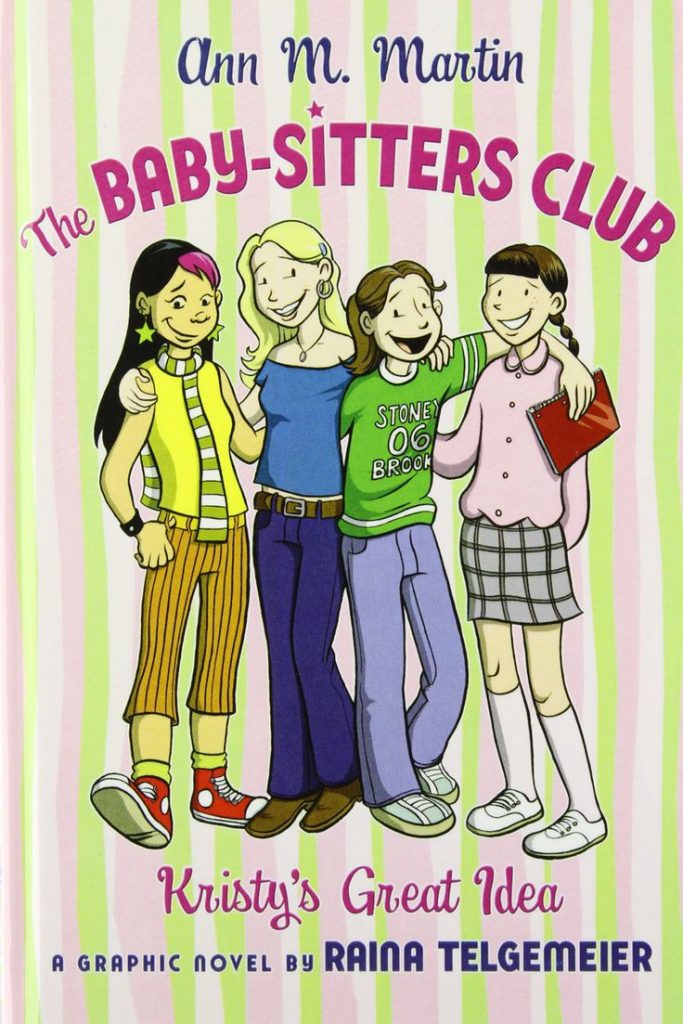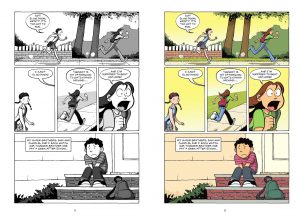Review by Frank Plowright
Raina Telgemeier’s path to global dominance of the young adult graphic novel market started when in 2006 she began adapting Ann M. Martin’s hugely successful novels featuring four young girls who form a babysitter’s club. The easy manner and charm of Telgemeier’s subsequent work is already apparent. She retains the chapters in order to break the story down into easier chunks, gives the entire cast a youthful charm while ensuring they’re visually distinct, and keeps the art simple, but not without detail to establish a setting.
As she tells us on the opening page, it’s Kristy Thomas whose idea it was to start a babysitting club, having worked out how when parents need a babysitter it often takes them several phone calls to hook up with someone. If she and her friends Claudia Kishi, Stacey McGill and Mary Anne Spier had a club, parents would only need to call one number, and even if one of them was cheerleading and another had to look after their own younger sibling there’d still be someone available. There prove to be plenty of stages between concept and actuality, and they’re all considered. They’ve surely since been used as a template by readers, as they must have been when Martin published her original novel.
While kept upbeat and cheery, this isn’t a sanitised world. The girls have individual problems, ranging from considerable shyness to even more serious matters, and these aren’t trivialised. Just as in the real world there isn’t always a simple solution, but it’s stressed that it’s always worth talking, and those problems are given greater attention in the following books, beginning with The Truth About Stacey. What makes The Baby-Sitters Club such fun, though, isn’t the problems they have, it’s the imagination applied to creating various strange situations the girls find themselves in, and how they require ingenuity to deal with unruly kids or the witch who lives next door. The beginning and end of the book feature page-turning connected chapters, while all others are individual short stories, with the narration switching according to which of the girls is central to events.
According to the author bio, The Baby-Sitters Club novels had sold 176 million copies by 2016, and success like that doesn’t come without massive popular appeal. It’s an appeal these adaptations obviously also possess. They began as black and white editions, and were upgraded via the addition of Braden Lamb’s colour in 2016, but in slightly smaller format, the contrast compared for the sample page. Telegemeier’s art strikes the right tone in either package, and a door into a cheerful small town world remains open.






